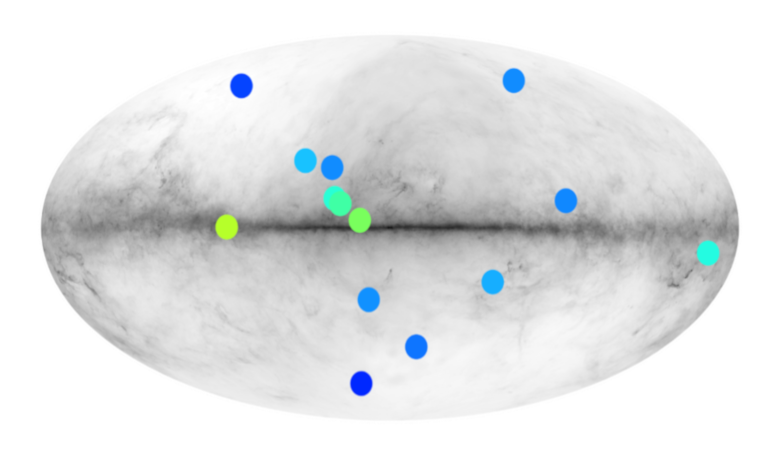It might sound like the stuff of science fiction, but antimatter – the opposite of normal matter – does exist. Physics laboratories such as CERN for example have been routinely producing antiparticles for the last 50 years, but naturally, out there in the cosmos, there is not much of it, hardly any in fact. Now a team of astrophysics have suggested some of it might be lurking in an unlikely place and have identified 14 likely culprits that could be hiding it.
The case of antimatter is a head-scratcher. We live in a Universe made exclusively of matter, but as early as 1928 physicist Paul Dirac worked out that the electron, a tiny particle with a negative charge, should have a corresponding partner with a positive charge. It does and it is called the positron.
As matter and antimatter particles annihilate when they come into contact with one another, why is there even any matter at all? Why does everything you can see about you still exist?
Such questions have led to many speculative theories, including one hypothesis which suggests that an entire anti-Universe exists somewhere else. Or perhaps it is as simple as that antimatter is just hiding somewhere currently unseen..
This latter idea became more tangible when a particle physics experiment module that is mounted on the International Space Station known as the Alpha Magnetic Spectrometer (AMS), recently made a tentative detection of antihelium nuclei.
But where could this antinuclei come from? A team of astronomers led by Simon Dupourqué at the Institut de Recherche en Astrophysique et Planétologie in France, think that the surface of antistars – stars made of antimatter – could be the place to look.
When collisions between antimatter and matter particles occur they produce gamma rays with a specific type of energy.
If normal matter was drawn down from interstellar space onto the surface of an antistar it would annihilate and produce this same type of high energy radiation. This electromagnetic signal would act like a beacon pointing to where it came from.
To test the theory, Dupourqué and colleagues scoured 10 years worth of gamma-ray data from the Fermi Large Area Telescope (LAT) to see of they could find a match.
Of the 5,787 sources they examined, only 14 candidates had emission properties that were comparable to those expected for antistars.
There is a chance say the team, that these objects are not antistars, and instead are other types of gamma-ray emitters, such as pulsars or black holes, but further investigation will needed to rule this out.
Keen to know just how many antistars could be lurking out there, the team ran a number of simulations based on the number of observed candidates, assumed antistar properties and the sensitivity of the Fermi telescope, the team calculated that in the Milky Way, only one antistar exists for every 400,000 normal stars.
Look beyond the Milky Way to the galactic halo, then things could be very different say the team, as there would be much less gas and dust in interstellar space to accrete onto any potential antistars.
Without a strong gamma-ray signature showcasing their whereabouts, these far-out antistars would easily evade detection.
As tantalising as antistars are, even if these 14 objects turn out to be the real thing, there is not enough of them to help explain where the rest of the Universe’s missing antimatter is. But they would infer that substantial amounts of antimatter did somehow manage to survive being annihilated by their common counterpart – a finding that would significantly change our understanding of what happened in the early Universe.
The research has been published in Physical Review D.











